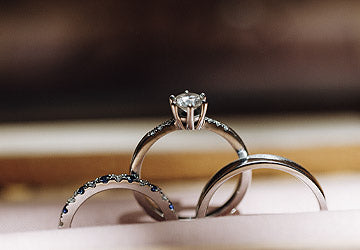When it comes to precious gemstones, few hold the allure and mystique of emeralds and diamonds. Both gems are revered for their beauty and value, but are emeralds truly rarer than diamonds? Let's delve into the world of gemstones to uncover the answer.
Understanding Rarity
Rarity in gemstones is determined by several factors, including availability in nature, demand in the market, and perceived value. While diamonds are known for their scarcity, emeralds have their own unique qualities that contribute to their rarity.
Formation and Occurrence
Diamonds
Form deep within the earth's mantle under extreme pressure and temperature. They are brought to the surface through volcanic eruptions or deep-seated geological processes. Diamond mines are found in various countries, with significant deposits in Africa, Russia, Canada, and Australia.
Emeralds
Formed in hydrothermal veins where hot fluids interact with existing rocks. They are often found in association with other minerals such as quartz, mica, and feldspar. Emerald deposits are primarily located in countries like Colombia, Zambia, Brazil, and Afghanistan.
Availability and Mining
Diamonds
While diamonds are considered rare, their availability has increased over the years due to advanced mining techniques and the discovery of new deposits. However, the mining and extraction process for diamonds is complex and often involves large-scale operations.
Emeralds
Emeralds are relatively scarce compared to diamonds. Their formation process is intricate and requires specific geological conditions. Mining emeralds can be challenging due to their occurrence in remote and geologically complex regions.
Gemstone Characteristics and Rarity
Emeralds and diamonds possess unique characteristics that contribute to their rarity and value in the gemstone market.
Emeralds are known for their rich green color, which is caused by the presence of chromium, vanadium, and iron in the crystal structure. The intensity of the green color, combined with clarity and size, determines an emerald's value. However, finding emeralds with top-quality color and clarity is exceptionally rare, making them highly sought after by collectors and connoisseurs.
Diamonds, on the other hand, are prized for their brilliance, hardness, and rarity. Their colorless nature allows them to refract and reflect light, creating the dazzling sparkle that has made them a symbol of luxury and romance. The rarity of diamonds is influenced by several factors, including their size, color, clarity, and cut. Natural diamonds with high color grades (such as D, E, and F) and exceptional clarity (such as Flawless or Internally Flawless) are particularly rare and valuable.
Famous Examples of Rarity
Several famous emeralds and diamonds exemplify the rarity and allure of these gemstones.
One of the most famous emeralds is the "Chalk Emerald," a 37.82-carat emerald that originated from Colombia and is renowned for its vibrant green color and clarity. Another notable emerald is the "Duke of Devonshire Emerald," a 1,383-carat emerald crystal displayed at the Natural History Museum in London, showcasing the immense size and rarity of some emerald specimens.
Diamonds, too, have their share of famous examples. The "Hope Diamond," a 45.52-carat deep-blue diamond, is one of the most famous diamonds in the world, known for its exquisite color and historical provenance. Another renowned diamond is the "Pink Star," a 59.60-carat pink diamond that set a world record for the highest price ever paid for a gemstone at auction, highlighting the rarity and value of exceptional diamonds.
Technological Advancements and Rarity
Technological advancements have had a significant impact on the issue of rarity for both emeralds and diamonds.
In the case of emeralds, modern mining techniques and technologies have allowed for more efficient extraction of emerald-bearing rock, increasing the supply of emeralds in the market. Additionally, advancements in gemstone enhancement techniques, such as oiling and resin filling, have improved the clarity and appearance of lower-grade emeralds, making them more marketable.
For diamonds, technological advancements have led to the creation of lab-grown diamonds, which are chemically and optically identical to natural diamonds. These lab-grown diamonds offer a more sustainable and ethical alternative to mined diamonds, reducing the pressure on natural diamond resources and potentially affecting their rarity in the long term.
Gemstone Investment: Rarity and Value
Investing in rare gemstones like emeralds and diamonds can offer unique opportunities for those looking to diversify their portfolios. The rarity of these gemstones plays a significant role in their investment potential.
Rarity and Value
- Emeralds: Emeralds are rarer than diamonds, especially high-quality stones with vivid color and few inclusions. This rarity makes them highly sought after by collectors and investors, driving up their value over time.
- Diamonds: While diamonds are more common than emeralds, certain diamonds are incredibly rare and valuable. Factors like size, color, and clarity contribute to a diamond's rarity and, subsequently, its value as an investment.
Investment Potential
- Long-Term Growth: Both emeralds and diamonds have shown a tendency to appreciate in value over the long term. Their rarity ensures that they remain desirable and sought after by collectors and enthusiasts.
- Market Demand: The rarity of these gemstones, especially in larger sizes and exceptional quality, ensures a consistent demand in the market. This demand helps maintain and increase their value over time.
- Quality Matters: When considering gemstone investments, it's crucial to prioritize quality. High-quality, rare gemstones will generally hold their value better and have a higher potential for appreciation.
Conclusion
While both emeralds and diamonds are considered rare and precious, emeralds are generally considered rarer due to their geological formation, limited availability, and specific mining requirements. However, the value of a gemstone is subjective and influenced by factors such as color, clarity, carat weight, and market demand. Whether you prefer the timeless elegance of diamonds or the vibrant allure of emeralds, both gems hold a special place in the world of jewelry and gemology.
Visit Impress Jewelry Creations to explore our exquisite collection of emerald and diamond jewelry. Experience the difference with our boutique atmosphere and let our expert team help you find the perfect piece to cherish for a lifetime. Schedule an appointment or visit our website to discover our unique collections today!





